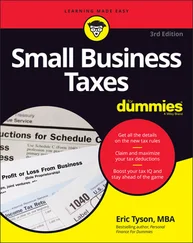Paul Tiffany - Business Plans For Dummies
Здесь есть возможность читать онлайн «Paul Tiffany - Business Plans For Dummies» — ознакомительный отрывок электронной книги совершенно бесплатно, а после прочтения отрывка купить полную версию. В некоторых случаях можно слушать аудио, скачать через торрент в формате fb2 и присутствует краткое содержание. Жанр: unrecognised, на английском языке. Описание произведения, (предисловие) а так же отзывы посетителей доступны на портале библиотеки ЛибКат.
- Название:Business Plans For Dummies
- Автор:
- Жанр:
- Год:неизвестен
- ISBN:нет данных
- Рейтинг книги:4 / 5. Голосов: 1
-
Избранное:Добавить в избранное
- Отзывы:
-
Ваша оценка:
- 80
- 1
- 2
- 3
- 4
- 5
Business Plans For Dummies: краткое содержание, описание и аннотация
Предлагаем к чтению аннотацию, описание, краткое содержание или предисловие (зависит от того, что написал сам автор книги «Business Plans For Dummies»). Если вы не нашли необходимую информацию о книге — напишите в комментариях, мы постараемся отыскать её.
Business Plans For Dummies
Business Plans For Dummies — читать онлайн ознакомительный отрывок
Ниже представлен текст книги, разбитый по страницам. Система сохранения места последней прочитанной страницы, позволяет с удобством читать онлайн бесплатно книгу «Business Plans For Dummies», без необходимости каждый раз заново искать на чём Вы остановились. Поставьте закладку, и сможете в любой момент перейти на страницу, на которой закончили чтение.
Интервал:
Закладка:
Clarifying Your Company Values
Values statements often address several audiences. Salesforce.com’s vision statement notes employees, customers, partners, communities, and the environment — a rather broad array, to be sure. Should there be a priority ranking here, as well as for your own organization’s statement? We think so, and in fact one reason we like Salesforce’s pecking order is because it recognizes that a vision is only as good as it will be lived by its exemplars — that is, employees (or if you operate a business alone, yourself).
But your company’s values have an obvious impact on all your stakeholders, including the owners, investors, bankers, customers, suppliers, regulators — and heck, even crazy Uncle Ernie if he’s the one who loaned you the $10K to start your business. (See Chapter 2for more info on stakeholders.) As you start to identify your company’s most important values, you have to consider different viewpoints, including the following:
The demands of your investors (if you have any)
The interests and expectations of all your stakeholders
The beliefs and principles that you and your company already hold
When you come up with a preliminary list of company values that you feel are most important, you’re in a good position to create your values statement.
Putting together your values statement
Drawing up a list of beliefs and principles is one thing; putting those beliefs to the test is another. Tough choices are bound to come along, and they force you to examine your beliefs closely. If you run a one-person company, you already know something about what you stand for. In a bigger company, certain beliefs and values are inherent in the ways the company does business. The best way to get to the heart of your company’s beliefs and principles is to imagine how you’d respond to tough dilemmas.
Your company’s values statement represents more than a quick to-do list. The description of your values reaches beyond quarterly goals or even yearly targets. Your values should guide you through tough decisions as you build a sustainable business that lasts and grows over years and decades.
Maybe your company has some sort of values credo already in place but tucked away into a file that hasn’t been accessed in ages. If so, at least you’re a step ahead of the game. (You lose points, however, if you have to glance at a dusty bronzed plaque on the office wall to remember it — even more if you don’t remember where the plaque hangs.)
You may not have the luxury of spending weeks or months developing a values statement, so we show you a quick way to create one that sets your company on the right track. If your company is small, you can follow the steps yourself or with one or two of your colleagues — no need for long meetings and careful review. If you’re part of a larger company, however, you may have to wade through a bit more debate to get a consensus.
 You can’t and shouldn’t create a values statement too quickly, but you can quickly begin a process to help capture and articulate the values intrinsic in the behaviors of leadership and employees of your business. Follow these steps to start creating a values statement:
You can’t and shouldn’t create a values statement too quickly, but you can quickly begin a process to help capture and articulate the values intrinsic in the behaviors of leadership and employees of your business. Follow these steps to start creating a values statement:
1 Gather your company’s chief decision-makers to talk about the general company values that should (and do) guide employee behavior.Come prepared with an agenda and your own observations and take careful notes. Use good meeting management protocols to ensure all voices are heard and hierarchical or seniority battles don’t arise (for example, ensure the meeting facilitator never dismisses a suggestion out of hand no matter whom it’s from). One useful trick is to bring in a relatively new employee and ask that person the single most important thing that attracted them to the firm.
2 Prepare a first-draft list of all the values discussed in the meeting and circulate copies for review.
3 Schedule one or two follow-up meetings with senior managers to clarify and confirm a final set of values.
4 Create a values statement that captures the agreed-upon values clearly and concisely, and get it approved by the board or other such advisory body if that’s necessary.
5 Meet with managers at all levels to make sure that they understand the importance of, and the reasoning behind, the company values statement.Another useful exercise is to select one value from the statement and start off your next management meeting with some discussion around it; solicit examples, positive and negative, about its deployment, and try to come up with some suggestions for better communicating the value if it appears there’s a problem. Rotate the value under discussion at the next meeting until all have been covered.
6 See that every employee gets a copy of the statement.If you’re in business for yourself, place a hard copy of the values statement near your workspace or at your home office if that’s what you use. Don’t let it gather dust. For a bigger company, print the values statement on wallet-size cards and don’t forget to include it in the annual report. Post it on the company website and make sure it reaches all the stakeholders.
Following through with your values
A values statement can sometimes turn out to be a bit too simplistic, with words that sound good on paper but that are difficult to put to practical use. Worse, some firms simply outsource the creation exercise to an external wordsmith and then smugly declare they are woke. We recently came across a research report by Booz Allen Hamilton, a large consulting firm, and the Aspen Institute that found that a majority of the vision statements they examined used five similar terms: Integrity, Teamwork, Authenticity, Sense of fun, Customer orientation. They urged that these be expunged from any such statement, as they smacked of simple follow-the-leader regimentation rather than any sincere effort to unearth and institutionalize the firm’s real values.
To make your values statement really useful, you need to take the next step and link your values to basic, sensible rules that employees at all levels in your company can follow. You may want to create an anonymous “online hotline” where employees can express to senior management their own ideas about values and about how your company is fulfilling its stated values, without fear of retribution. You may even get some unanticipated great new insights this way.
 When the time comes to conduct those annual employee performance reviews (you know, the ones that everyone loves to hate), use them as an opportunity to promote your company’s values. Bring out a copy of the values statement and ask each employee how well their individual activities reflect the company’s values. At the same time, ask yourself whether the incentives and reward systems in your company work toward supporting those values. In fact, if you’re really an evangelist, you will tie a portion of that person’s compensation to some metric that measures compliance with firm values. Bet that gets attention fast.
When the time comes to conduct those annual employee performance reviews (you know, the ones that everyone loves to hate), use them as an opportunity to promote your company’s values. Bring out a copy of the values statement and ask each employee how well their individual activities reflect the company’s values. At the same time, ask yourself whether the incentives and reward systems in your company work toward supporting those values. In fact, if you’re really an evangelist, you will tie a portion of that person’s compensation to some metric that measures compliance with firm values. Bet that gets attention fast.
Creating Your Company’s Vision Statement
 Your company’s vision statement should be a precise, well-crafted document announcing where your company wants to go and painting a picture of what your company wants to become. To people on the inside and outside of your company, your vision statement is a compass, showing the whole world the direction in which your company is heading.
Your company’s vision statement should be a precise, well-crafted document announcing where your company wants to go and painting a picture of what your company wants to become. To people on the inside and outside of your company, your vision statement is a compass, showing the whole world the direction in which your company is heading.
Интервал:
Закладка:
Похожие книги на «Business Plans For Dummies»
Представляем Вашему вниманию похожие книги на «Business Plans For Dummies» списком для выбора. Мы отобрали схожую по названию и смыслу литературу в надежде предоставить читателям больше вариантов отыскать новые, интересные, ещё непрочитанные произведения.
Обсуждение, отзывы о книге «Business Plans For Dummies» и просто собственные мнения читателей. Оставьте ваши комментарии, напишите, что Вы думаете о произведении, его смысле или главных героях. Укажите что конкретно понравилось, а что нет, и почему Вы так считаете.












